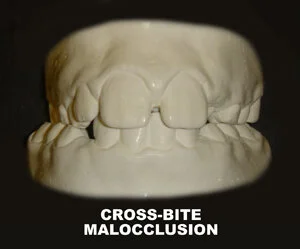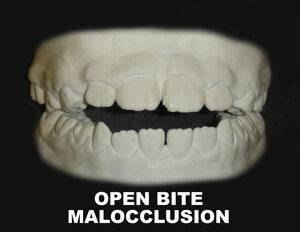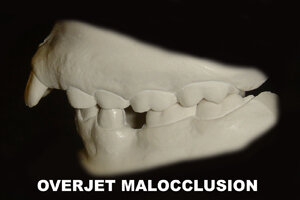Features Overview
This high narrow arched palate illustrates what can happen when the thumb is consistently putting pressure on the soft tissue, thus molding the palate to the shape of the thumb. This high narrow palate makes it difficult for the tongue to rest in the correct position contributing to further changes in the occlusion, as well as forcing the swallowing pattern to change
Strong thumb sucking action can contribute to another type of malocclusion called cross bite. In simple terms the posterior teeth do not fit properly on one or both sides. The top teeth bite inside of the lower ones instead of outside as they should. This often causes the jaw to shift to one side when the person bites together.
This open-bite (top and bottom teeth not coming together) often is created from prolonged thumb sucking.
The picture illustrates how the thumb can act like a wedge holding the top and bottom teeth apart. Until you remove the thumb from the equation the teeth are not allowed to grow and develop properly creating a little window. This little window allows the tongue to rest in this space which also contributes to the malocclusion.
This excessive overjet illustrates how the thumb sucking action places a great deal of pressure on the dentition forcing the top teeth to protrude. This position (of the teeth) makes it difficult to maintain natural lip closure
The model illustrates a normal shaped palate. The horseshoe shape accommodates better spacing for the teeth.






